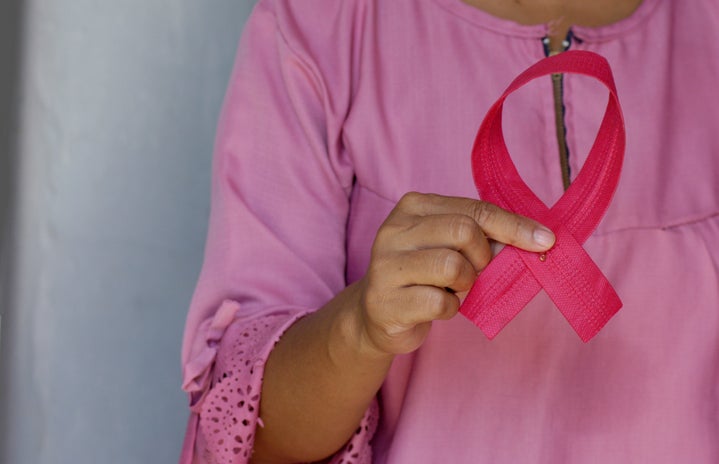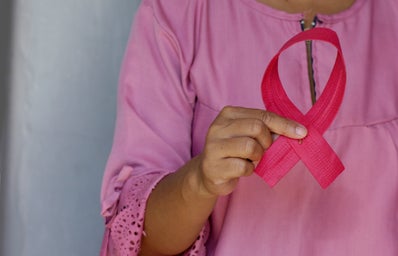This time last year, my mom was diagnosed with breast cancer. It was one of those times that life was just too cliché. Breast cancer has always been something my family talked about because my grandma had it years ago and because my mom is keen on supporting female health. She even did the Avon 39 walk after her friend had been diagnosed. But even though I grew up very aware of breast cancer and preventative measures for it, last year I found myself in the middle of Breast Cancer Awareness month not having worn pink once or even having reposted one of the plethora of infographics I saw on social media. Everything changed when I got the call from my mom that she had been diagnosed with breast cancer.
There are a lot of breast cancer statistics out there that we don’t talk about enough. For example, according to Breastcancer.org, “Breast cancer is the most commonly diagnosed cancer among American women.” Further, they state it’s the “most common cancer in the world.” I would be surprised if those facts didn’t scare you a little bit, but I also feel like cancer has become so socially integrated in our society that those types of statistics don’t bother us as much as they should until we are reminded of what they actually mean. And when we’re not bothered by something, we tend not to think about it. When we don’t think about it, we don’t act on it.
We need to act on this. We can act on this.
There are so many ways that you can take your health into your own hands and not allow your life to be guided by a set of statistics. Most of us aren’t at the recommended age where we should be getting mammograms—that’s the late twenties at the earliest — but that doesn’t mean we can’t do anything at all. Self-examination is one of the most empowering ways women can keep track of their health. It allows us to monitor our bodies for changes and take care of them in the best way possible. Here is Breastcancer.org’s five steps to self-examination:
- Look at your breasts in a mirror with your shoulders straight and hands on your hips.
• Healthy Signs: usual size, shape, and color; evenly shaped, no distortion or swelling
• Causes for Concern: dimpling, puckering, bulging of skin; nipples that have become inverted or changed position; redness, soreness, rash, or swelling
- Still looking in the mirror, raise your arms above your head.
- In that position, look for fluid coming out of either nipple.
- Lay down and use an arm to touch your opposite breast (ie. right arm to left breast and vice versa). The arm on the side of the breast you are examining should be underneath your head. Rub three of your finger pads in a circular, quarter-sized motion. Do this over the entire breast: from the collar bone to your abdomen and from your armpit to your cleavage.
- Stand or sit up and repeat the same actions from step 4. The arm on the side of the breast you are examining should be raised straight up.
I think it’s important to note that right after they describe the self-examination, they say that if you find something, don’t panic. Self-examination is a tool that allows you to get help if you find yourself needing it. If anything, you should feel empowered that you have taken the proper steps that have enabled you to seek help.
Breast cancer is common and it’s scary. But by realizing its significance in the world and in our lives, we can take action to do right by ourselves. Taking back control and self-examining — and when old enough, getting your annual mammogram — can make it much more manageable. I really hope that this article has encouraged you to self-examine and to be more aware of breast cancer, not just during October. My mom could have been diagnosed at any time during the year, but when life is cliché like it, it’s trying to make a point. The takeaway is that we can make taking care of ourselves an empowering decision. Checking up on your health should leave you feeling like you have authority over what happens to you because you’re taking action. So next time you wear pink, make sure you’re thinking about yourself, too.



